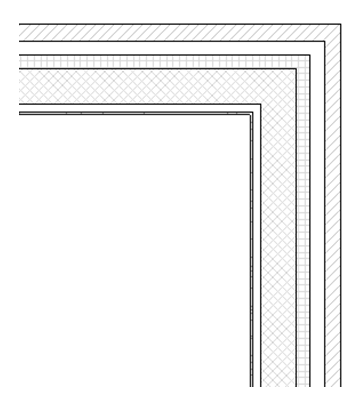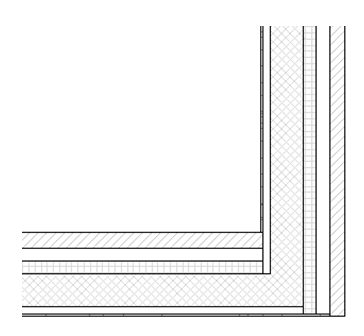Wall Intersection Behavior
As discussed previously, the highest priority subparts in a Tee intersection are joined first and the lower priority subparts are broken.
At an L intersection, behavior can differ depending on whether like wall materials are on the same side of the wall or opposite sides of the wall.
The outside corner shown in the L intersection below, has no material joining through the structure of the wall. So all like materials meet cleanly.
The outside corner shown in the L intersection below, has material on opposite sides of the wall. In this case the brick does not penetrate the CMU because the brick function is set to finish and the CMU is set to structure.


